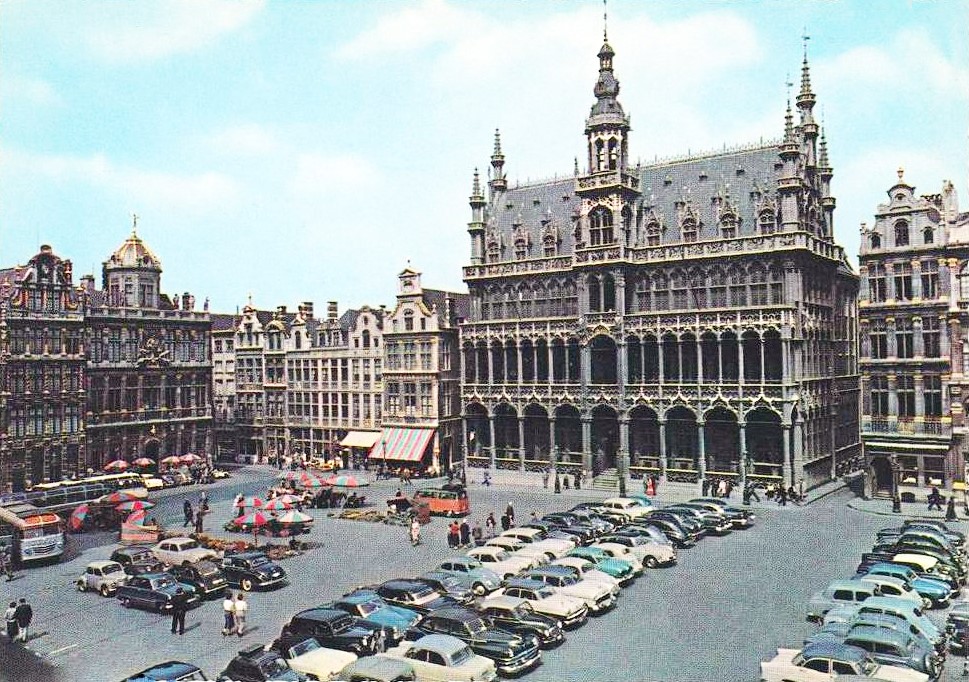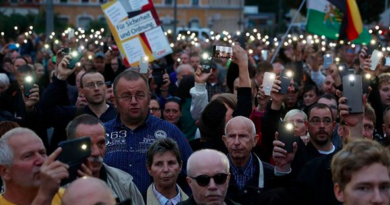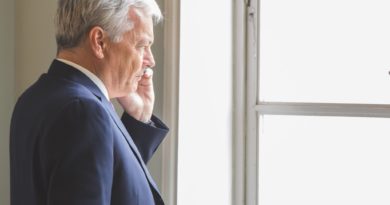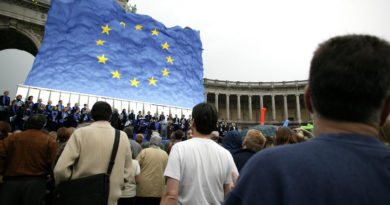How did Brussels look in the early 1980’s?
Marlow, the narrator in Joseph Conrad’s 1899 novella, Heart of Darkness, described Brussels as ‘a city that always makes me think of a whited sepulchre.’ When I first came to Brussels in the early 1980s, decades of chimney smoke and industrial pollution had blackened most of the city’s remaining stonework (the clean-up of the cathedral only began in 1983). But the metaphor of a sepulchre still seemed appropriate in some respects, even if the bloody horrors of Leopold II’s Congo Free State had long since seeped into the African soil. Scribbling down some recollections for this piece, I realised that the Brussels of today is, despite all its shortcomings, immeasurably better than the Brussels I first encountered in 1981. Thinking about those times, a term that comes to mind is ‘anarchy’. Nowhere was this more apparent than in the city’s architecture and urban structure.
A big part of the problem was that for decades the Brussels region (as it would become) had no local government; after various constitutional reforms, the first regional elections would finally take place only in June 1989. Another part of the problem was the latitude given to grandiose architectural and urban schemes, fuelled by unrestrained speculators, inspired, after Expo ’58, by a vague concept of ‘America’ (until recently the policiers-motards still rode classic Harley Davidsons) and wholly devoted to the automobile. Various motorway schemes led in turn to an emptying-out of Brussels, which meant that few really cared about or for the city’s architectural heritage.
So it was that until 1990 the city’s greatest jewel, the Grand Place, served as a car park and through road, and the neo-classical splendours arranged harmoniously around the Place des Martyrs were allowed to fester until only the façades could be saved. Where else could such an ugly building as the Philips Tower be built opposite the eclectic beauty of the La Monnaie opera house? In what other city would Victor Horta’s Maison du Peuple be wantonly demolished and replaced by the twenty-six floor Blaton tower – seemingly a deliberately bland concrete monstrosity? Vast holes yawned beside the rue de la Loi (where the Justus Lipsius building now looms) and in front of the Gare Centrale (where the Hilton Hotel now greets the visitor). In the early 1980s, the rue Joseph II and the Avenue de Cortenbergh were still mainly lined with stucco-façaded patrician town houses from the belle époque. The owners of many of these houses – there and elsewhere – punched holes in the roofs to let the rain in and speed up the process of decay that would enable them to be demolished and make way for speculative construction.

Brussels had always been blasé about its architectural heritage: the Palais de Justice deliberately crushed the life out of the popular Marolles district; the cut-and-cover method used to build the railway Jonction between the Gare du Midi and the Gare du Nord wiped away swathes of the mediaeval city; the city walls were demolished essentially to make way for the mini-motorway of the petite ceinture; the over-ambitious World Trade Center obliterated the popular quarters behind the Gare du Nord; indeed, the process I was witnessing, as I wandered around the city on foot, had a name; ‘Brusselization’ (“the indiscriminate and careless introduction of modern high-rise buildings” and “haphazard urban development and redevelopment” – Wiki). The more I wandered, the more I got an impression of decadence and decay. The First and the Second World Wars had left the city largely untouched, but now it seemed to be devouring itself, like an urban version of necrotising fasciitis.
There was another notorious phenomenon, though it wasn’t restricted to Brussels; les travaux inutiles (literally, useless works). Most of these came about through unrealised heady ambitions, mostly to do with cars (metro projects were another rich source of useless works). Anybody driving into Brussels can see where the motorways were, at one stage, supposed to have gone: namely, all the way into the city centre (they would have met up somewhere around Place St Josse). If the planners had had their way, the car was going to take over the ground, and pedestrians would henceforth walk along elevated platforms. Look again at the ‘apron’ about a quarter of the way up the Philips Tower; that was going to be the new pedestrian zone. The pedestrian bridge that used to stretch from the Cité administrative over the Botanique end of the Boulevard Pachéco was another vestige of that brave new world. Who now remembers the motorway viaduct that spanned the Boulevard Léopold II, from Boulevard Emile Jacqumain to Boulevard Roi Albert II?; another Expo ’58 folly, erected to worship the automobile god, and finally demolished in 1984 (though part of it was recycled as the down ramp at the entrance to the Belliard tunnel). From the belly of the Berlaymont officials could drive directly onto the motorway, and on to Paris or Bonn. Indeed, only one traffic light, at Notre Dame de Bonne Odeur (long since suppressed), stood between Paris and Bonn.
Brussels has undoubtedly got much better. The speculators are still there. There is still too much ‘façadisation’ (another maladie, where old buildings are gutted and only the façade is retained). But there is a sense of order and control in the city now – thanks in large part to local government. The car is no longer an omnipotent god. From an urban point of view, Brussels may be battered and bruised, but it is no longer a whited sepulchre.



